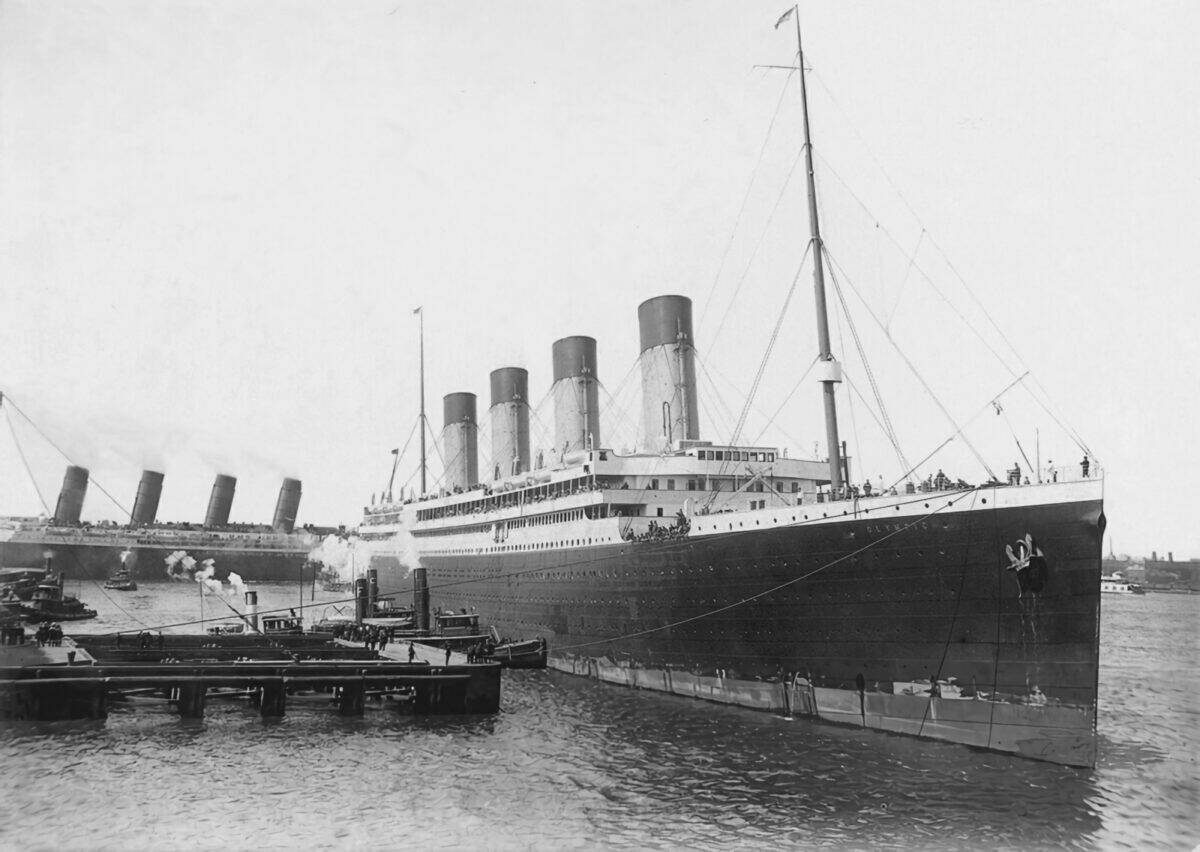While the story of the Titanic is one of the most well-known disasters in the 20th century, not as much is known about its sister ships. The Britannic and the Olympic don’t live on the same history level as the Titanic, but all three were important vessels as part of White Star’s Olympic-class liners.
At the time of their construction, these three ships were said to be the most luxurious and safest passenger ships in history. Unfortunately, for at least two of these ships, promises on paper didn’t translate to reality. With this in mind, let’s take a look at the story of Titanic’s two sister ships.
White Star Line

Originally founded in 1845, the White Star Line was one of the most prominent shipping lines in all of England. By the time the 20th century came around, White Star Line was in heavy competition against its primary rival, Cunard.
As a response to Cunard launching vessels focusing on luxury, White Star Line decided to respond in kind. Building the Titanic, Britannic, and Olympic was how the company wanted to regain its competitive advantage with transatlantic voyages.
Harland and Wolff

©John Bradley / Creative Commons Attribution-Share Alike 3.0 Unported license - Original / License
Contracted by White Star Line, the Belfast firm of Harland and Wolff was hired to design the ships. Working alongside White Star Line’s chief naval architect, Thomas Andrews, the goal was simple. White Star wanted to have the most luxurious ocean liners the world had ever seen.
It didn’t take long for plans for both the Olympic and Titanic to come together. Both ships were built side-by-side with Harland and Wolff handing control back of both ships to White Star Line on May 31st, 1911.
Olympic Maiden Voyage

The Olympic’s maiden voyage culminated with an arrival in New York City on June 21, 1911. With executives from both White Star Line and Harland and Wolff on board, the celebration was massive. Over 8,000 people turned up to watch the ship enter the New York City harbor. More than 10,000 residents would watch the Olympic return home and these moments are often considered the start of the “superliner era”.
World War I

©okänd fotograf/E. A. Sweetman & Son / Sjöhistoriska museet / Public Domain - Original / License
By the time World War I came around, White Star Line hoped its ships would stay out of the fight. After the sinking of the Titanic in 1912, the Olympic was still in service but had undergone extensive work to retrofit additional lifeboats and increase the number of watertight doors. The same can be said for the Britannic, which was still under construction.
However, to best serve England, the Olympic was brought into military service and used as a troop carrier. In total, the Olympic carried an estimated 210,000 Canadian and American troops back and forth across the Atlantic.
HMHS Britannic

While still incomplete as a luxury liner, the British military forced the Britannic into service as a hospital ship. On November 13, 1915, the HMHS Britannic began service. The ship’s role was essentially converted away from cabins and dining rooms into medical wards.
According to reports, the Britannic struck a mine at 8:12 AM on November 21, 1916, near the Aegean Sea. It would take only minutes before the Britannic’s watertight compartments were completely flooded and overwhelmed the ship.
Britannic Sinks

Over the next few hours, all of Britannic’s doctors, nurses, and crew members prepared to abandon the ship. At least two lifeboats were put into the water almost immediately but were destroyed by the ship’s propellers. It would only take 55 minutes from when the Britannic’s captain gave the official abandon ship call until the ship was beneath the water.
All of the ship’s crew except for those who had been killed in the first two lifeboats survived. Explorer Jacques Cousteau would later discover the wreck of the Britannic in 1975 at a depth of 400 feet. The Britannic remains the world’s largest intact passenger ship sunk in the ocean.
Olympic Returns

After the end of WWI, the Olympic would once again sail the Atlantic ferrying passengers back and forth between England and the U.S. At the Olympic’s height, it was carrying more than 1,000 passengers every trip across the Atlantic.
In 1934, this number had dwindled to just 9,000 passengers per year due to the Great Depression. As a result, White Star Line and Cunard merged in an effort for both companies to survive. With the company’s fleets combined, the Olympic was sold and scrapped.
The image featured at the top of this post is © Robert Welch / Public Domain.







